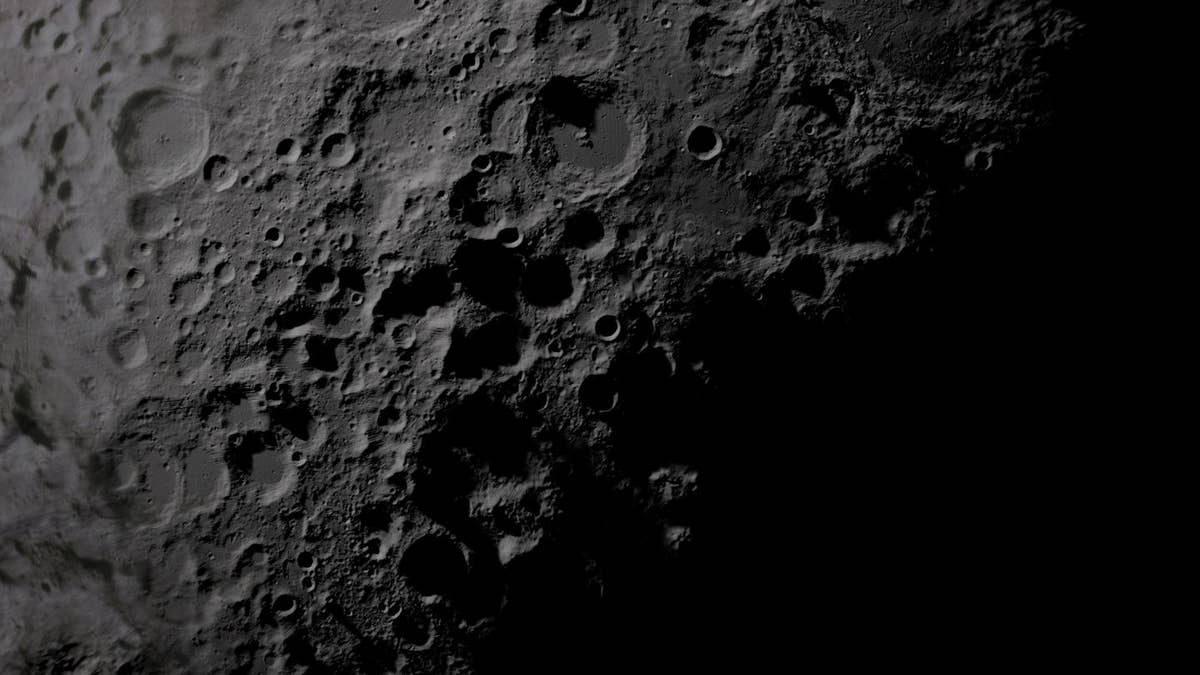Fox News Flash top headlines for May 12
Fox News Flash top headlines are here. Check out what's clicking on Foxnews.com.
New research on a sample of the moon brought back by Apollo 17 has revealed how giant meteorite impacts formed parts of the celestial satellite's crust.
A group of scientists led by the Royal Ontario Museum found that the formation of ancient rocks on the moon may be directly related to large-scale meteorite impacts.
Experts studied a rock returned to Earth by the Apollo 17 mission in 1972, discovering that it formed at extremely high temperatures of 4,300 degrees Fahrenheit. This, they explained in a statement, can only be achieved by the melting of the outer layer of a planet in a large impact event.
WAS MARS ONCE 'BLUE'? METEORITE DISCOVERY SHEDS LIGHT ON RED PLANET’S EARLY HISTORY
Researchers found the former presence of cubic zirconia, which has reverted to a mineral known as baddeleyite. The analysis revealed that the baddeleyite formed over 4.3 billion years ago.
“It was concluded that the high-temperature cubic zirconia phase must have formed before this time, suggesting that large impacts were critically important to forming new rocks on the early moon,” the scientists said in the statement.

The heavily cratered surface of the Moon's South Pole. (NASA/Goddard Space Flight Centre Scientific Visualization Studio)
The study, which is published in the journal Nature Astronomy, sheds new light on how the outer and inner layers of the moon developed after Earth’s natural satellite formed.
“This new research suggests that large impacts over 4 billion years ago could have driven this mixing, producing the complex range of rocks seen on the surface of the moon today,” the researchers added in the statement.
"Rocks on Earth are constantly being recycled, but the moon doesn't exhibit plate tectonics or volcanism, allowing older rocks to be preserved," explained Dr. Lee White, Hatch Postdoctoral Fellow at the ROM, in the statement. "By studying the moon, we can better understand the earliest history of our planet. If large, super-heated impacts were creating rocks on the moon, the same process was probably happening here on Earth."
EARLIEST EVIDENCE OF DEATH BY METEORITE DISCOVERED
After Apollo 11 astronauts Neil Armstrong and Buzz Aldrin set foot on the moon on July 20, 1969, only 10 more men, all Americans, walked on the lunar surface. The last NASA astronaut to set foot on the moon was Apollo 17 Mission Cmdr. Gene Cernan on Dec. 14, 1972.
CLICK HERE TO GET THE FOX NEWS APP
In a separate project, scientists recently discovered 4-billion-year-old organic molecules containing nitrogen in a Martian meteorite, shedding new light on the red planet’s early history.
Follow James Rogers on Twitter @jamesjrogers





















